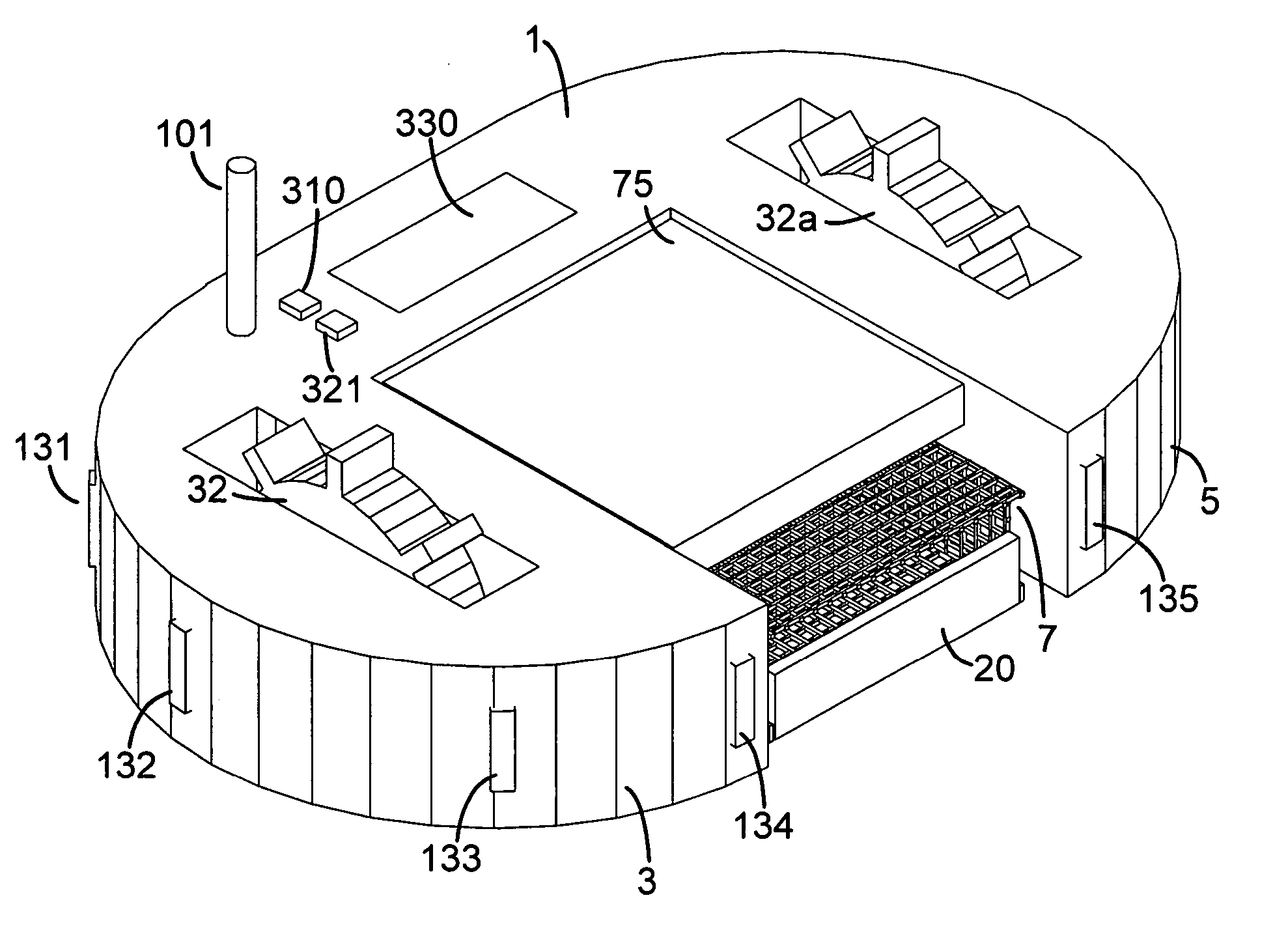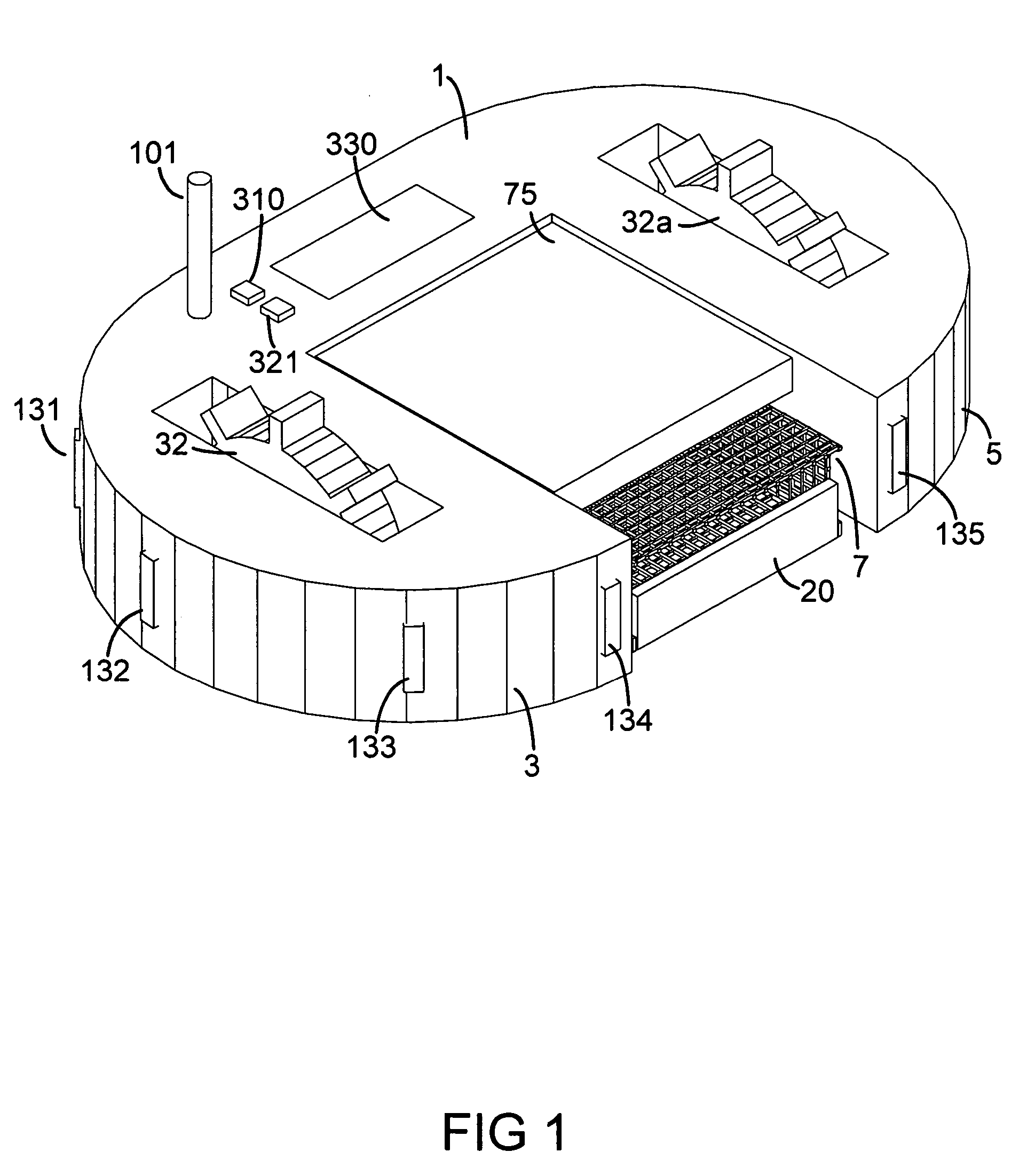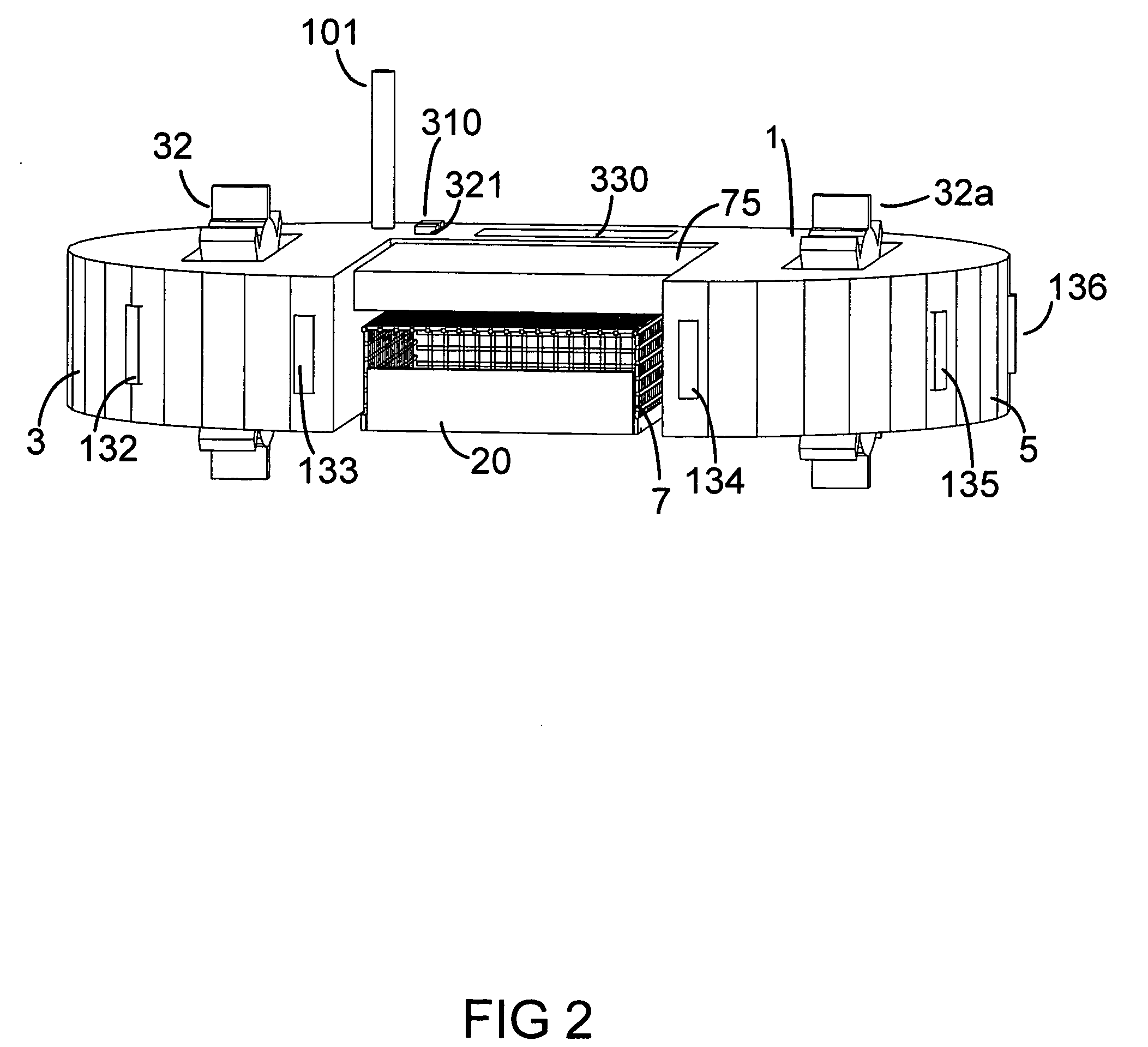Water surface cleaning machine
- Summary
- Abstract
- Description
- Claims
- Application Information
AI Technical Summary
Benefits of technology
Problems solved by technology
Method used
Image
Examples
Embodiment Construction
[0024] The water surface cleaning machine contains a housing 1 that is propelled across a surface of water. FIG. 1 and FIG. 2 show two different views of the water surface cleaning machine containing both the automatic and manual modes of operation. The housing 1 contains a porous basket 7 that collects floating debris, as the water surface cleaning machine travels. The basket collects debris and other floating objects, but does not hold water. The basket is secured in the water surface cleaning machine with its opening perpendicular to the water surface. The collection basket can take many forms including a disposable net.
[0025] The water surface cleaning machine contains a weir 20 to prevent debris from escaping from the basket 7. The weir 20 is located in front of the basket 7 and allows floating debris to be collected, but prevents debris from exiting the basket 7. The weir 20 is a rectangular volume that pivots around a line located below the water surface. The weir's 20 surfa...
PUM
| Property | Measurement | Unit |
|---|---|---|
| Temperature | aaaaa | aaaaa |
| Time | aaaaa | aaaaa |
| Power | aaaaa | aaaaa |
Abstract
Description
Claims
Application Information
 Login to View More
Login to View More - R&D
- Intellectual Property
- Life Sciences
- Materials
- Tech Scout
- Unparalleled Data Quality
- Higher Quality Content
- 60% Fewer Hallucinations
Browse by: Latest US Patents, China's latest patents, Technical Efficacy Thesaurus, Application Domain, Technology Topic, Popular Technical Reports.
© 2025 PatSnap. All rights reserved.Legal|Privacy policy|Modern Slavery Act Transparency Statement|Sitemap|About US| Contact US: help@patsnap.com



